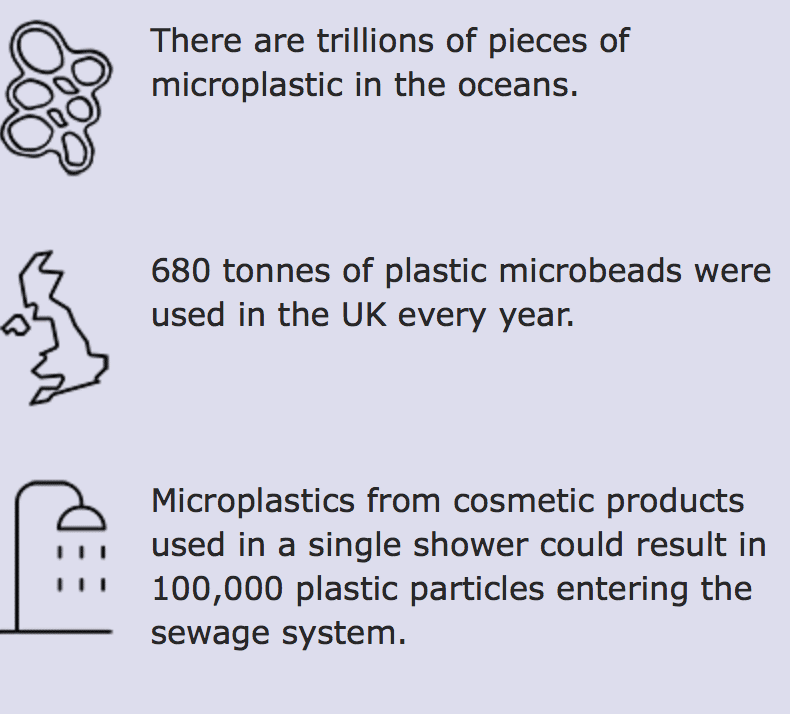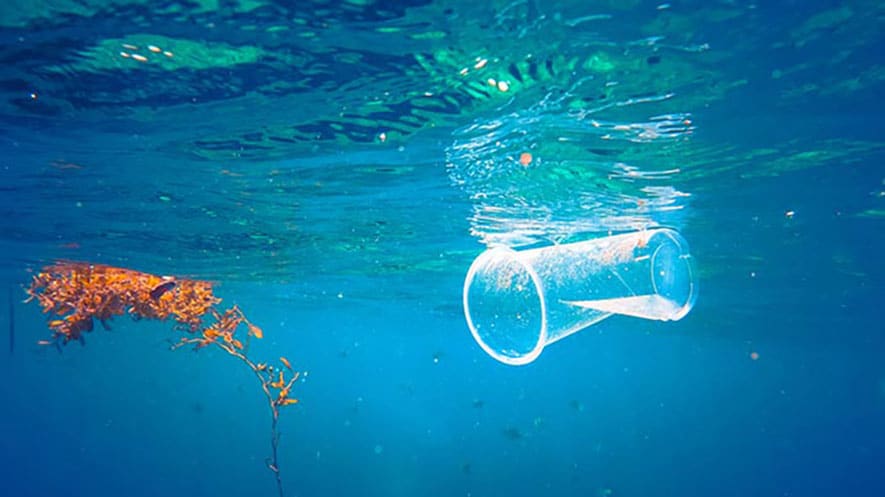Microplastics are tiny fragments of plastic often too small to see with the naked eye.
She said, “You might think that out here in the middle of the ocean we would see pristine waters but the Atlantic currents act like a huge whirlpool, drawing everything in from the coasts. So, sadly, there’s plenty of plastic here.”
She and her team are taking samples from this and another site in the South Atlantic Ocean. They’re scooping them from the top layer of the sea bed and at different depths of the water above it. At the moment, we don’t know how much microplastic pollution there is, we don’t know how it behaves and we don’t know how it affects sea life. Until we can find some answers to those questions, we’re going to struggle to find solutions.
Useful little things
From 2018, the UK government has banned one source of this pollution – called microbeads – from lots of everyday products. Microbeads are often in things like face wash and toothpaste. They exfoliate, they don’t cause allergic reactions and they can break open to release an ingredient at a specific moment.
The trouble with these useful little beads is they’re so small they slip though filters at sewage works and out into the oceans. They can get eaten by microscopic plankton and travel up the food chain into fish and, eventually, us. We don’t know what affect that might have on animals yet and scientists are working hard to find out.
Since scientists began to understand more about microplastics pollution in the oceans, they’ve been working with government and businesses to stop more plastics from getting into the sea. As a result, lots of soap companies have been phasing microbeads out of a lot of their products in time for the ban, including big names like Unilever, Johnson & Johnson and Proctor & Gamble. The ban will not apply to products that you leave on your skin such as sun cream and make-up.

The bigger plastics picture
Katsiaryna says, “The microbead ban is a wonderful step forward. But they are an important part of a much bigger picture. There are so many items, especially in the UK, that we use only once before throwing away. Over time, things like bottles, carrier bags and toys all break down into smaller pieces. So, most microplastics in the oceans are from much larger items.”
In Autumn 2017, the UK government announced plans to call for evidence on how taxes or other charges on single-use plastics such as takeaway cartons and packaging could reduce the impact of discarded waste on marine and bird life. At NERC, we are working with businesses to see how research could look at ways to reduce the amount of plastic that goes into the environment.
What can I do?
Two-minute beach clean
You don’t even need to be by the coast – litter picking anywhere will help to stop some plastics going into the environment. For more information, please visit the #2minutebeachclean website- external link.
Use less plastic
Avoid items that contain microbeads and single-use plastics like drinking straws. Take your own cup when you buy a takeaway coffee.
Join the great nurdle hunt
Look out for these tiny, lentil-sized plastics on beaches and report your sightings on the Great Nurdle Hunt website- external link.
By Sylvie Kruiniger, External Communication Officer, Natural Environment Research Council (NERC)

